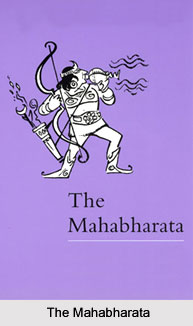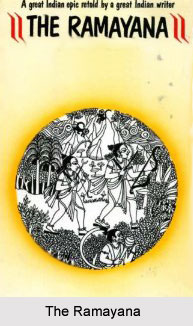 With a greater intention of retelling the stories of the great epics In this book, R.K. Narayan creates a marvelous peace of work. Adding his own distinct style he narrates the age-old myths and sagas of Indian legends.
With a greater intention of retelling the stories of the great epics In this book, R.K. Narayan creates a marvelous peace of work. Adding his own distinct style he narrates the age-old myths and sagas of Indian legends.
R. K. Narayan is conceivably one of the best-known Indo Anglican writers. He tried to capture the entire Indian ness in most of his novels. His translations of the mythological epics are very interesting and written in a nice manner. The spectacle of battle, the fascinating mystery of the supernatural, the passion, devotion and laughter of love, the quest of the spirit for eternity and these are the ingredients of legends. And Narayan`s retelling elicits them all with superb skill to provide the reader a treasury of enchanting myths. Since time immemorial these epics painted the landscape of Indian life and mind as well.
The stories of Ramayana and Mahabharata are R. K. Narayan`s delightful selection of stories from India`s vast treasure house of myths and legends handed down through the ages. Drawing his stories from The Ramayana, The Mahabharata and other great Indian epics, Narayan distinguishes the tales as the wise storyteller might recount them. One of the puzzling things is that it emphasized the `Kuru Vansha` without initiating the story of Krishna.  The character of Krishna comes into the story from nowhere & is called the incarnation without actually establishing his godness. The Childhood of Krishna is totally missing from the write-up. Although it`s the dialogues of Bhimasena are really exemplary. Also the question answers between Yaksha & Yudhishthir seem to be interesting enough to hold a reader. In the legends all things are seen possible. Here one thousand years seem only a second and good ultimately triumphs over evil. The Devi, who is the personification of the highest beauty and energy, beats the demon Manisha who has invaded the heavens, Manmata, the god of love, is burned up physically when he elicits the austere god Shiva. Yama, the god of death, is persuaded for the first time to release a soul when the mourning but determined Savitri pleaded for the return of her husband.
The character of Krishna comes into the story from nowhere & is called the incarnation without actually establishing his godness. The Childhood of Krishna is totally missing from the write-up. Although it`s the dialogues of Bhimasena are really exemplary. Also the question answers between Yaksha & Yudhishthir seem to be interesting enough to hold a reader. In the legends all things are seen possible. Here one thousand years seem only a second and good ultimately triumphs over evil. The Devi, who is the personification of the highest beauty and energy, beats the demon Manisha who has invaded the heavens, Manmata, the god of love, is burned up physically when he elicits the austere god Shiva. Yama, the god of death, is persuaded for the first time to release a soul when the mourning but determined Savitri pleaded for the return of her husband.
In the Ramayana the protagonist is Rama, avatar of Vishnu, covering his marriage, the theft of his wife Sita by the demon-king Ravana, and the search and struggle to recover her. Whereas in the Mahabharata the five Pandava brothers i.e. Yudhistira, Arjuna, Bhima, Nakula, and Sahadeva struggle to obtain their inheritance. They culminate in the great battle of Kurukshetra. Both epics have a plethora of side stories, covering the adventures of the heroes in exile and the deeds of their supporters and opponents. His writing style in Ramayana is really enchanting. After introducing the reader with the characters, the author details the childhood part of Rama. He enlaced the story in a beautiful manner till his marriage in great detail but the exile part is dealt with much depth. The part when Lakshaman is treated with sanjivani is missing the lamentation on Rama for deceit on Vali, which is handled diplomatically.
Being published by Tandem Library, Chatto and Windus, Penguin USA, Penguin Classics, Penguin, Penguin Books Australia Ltd., etc. these books are Narayan`s unbelievable creation.
The Ramayana and the Mahabharata are two epics that have been retold and reworked many times. These two books diffuse south and Southeast Asian religion, art, literature, and popular culture in a perfect way. They are a central part of the world`s literary heritage and should be better known in the West.













